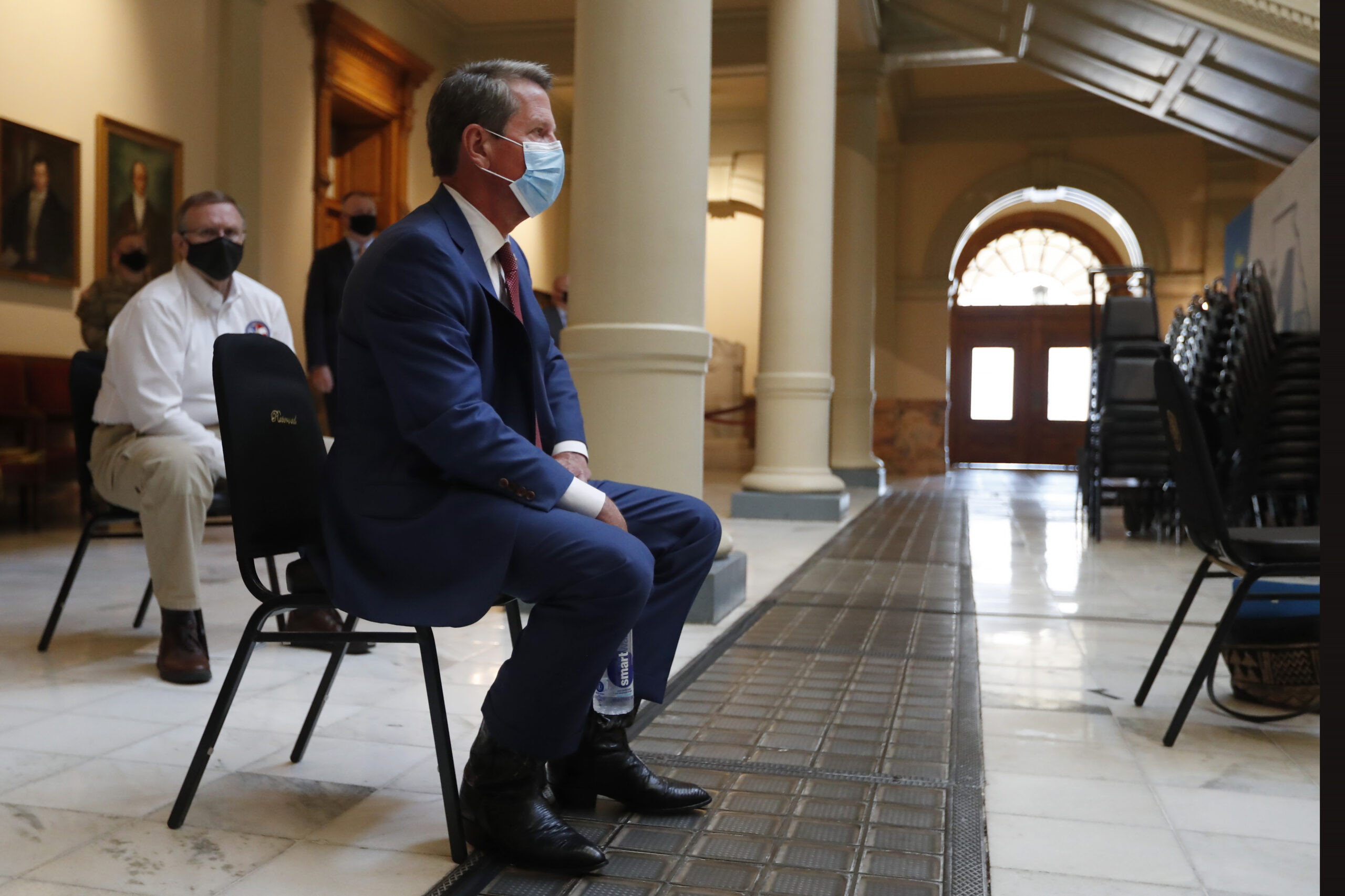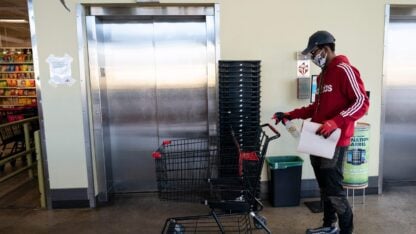White House Report: Some Progress Slowing In Georgia’s Coronavirus Fight

The most recent report from the White House Coronavirus Task Force obtained by WABE says Georgia had the 14th-highest rate of new COVID-19 cases in the country in the week leading up to Sept. 13.
John Bazemore / Associated Press
Updated at 6:30 p.m. Wednesday
The Trump administration’s latest assessment of Georgia’s effort to slow the spread of the coronavirus paints a mixed picture of the state’s progress. It also continues to warn of increased disease transmission on college campuses.
The most recent report from the White House Coronavirus Task Force, obtained by WABE, says Georgia had the 14th-highest rate of new COVID-19 cases in the country in the week leading up to Sept. 13. That’s a two-spot improvement from the prior week.
But the state didn’t show any progress in reducing the number of coronavirus diagnostic tests that return positive results, according to federal data.
Georgia’s positivity rate remained relatively flat in the week leading up to the report, putting the state 13th in the country for that metric, a six-spot drop from the previous week.
“I like the word ‘muddling,’” said Dr. Carlos del Rio, who studies infectious diseases at Emory University. “We’re not getting out of it as fast as I would like us to. We’re making a little progress, but it’s still very weak progress.”
Georgia is not out of the woods when it comes to the pandemic, del Rio says, and many of the recent gains made to slow the spread of the coronavirus could be easily undone, especially if the state continues to lose ground in diagnostic testing.
The latest White House report says the number of viral tests conducted in Georgia dropped more than 44% from the previous week, continuing a recent trend.
In the last month, the state has gone from conducting 1,260 tests for every 100,000 people to conducting only 639 tests for every 100,000 people — a net decrease of about 50%.
“That’s a huge drop,” del Rio said. “I worry that we may not be diagnosing people.”
Testing capacity isn’t the issue, he says. The real challenge is getting diagnostics to the settings that need them, such as colleges and universities seeing outbreaks.
For the second week in a row, the task force warns that increased disease spread among students could affect the communities that higher-education institutions call home.
“[The state should] strengthen mitigation efforts in university towns to decrease spread from universities to local [communities],” the report reads. “Consider a further decrease in hours and occupancy limits in bars and restaurants in university counties and anywhere university and college students gather.”
The document goes on to recommend state officials ask students — and all citizens — to limit social gatherings to 15 people out of fear of “recreating spreading events through bar-like gatherings” that could result in “continued high cases.”
That’s similar to a request the mayor of Athens-Clarke County says he’s made to Gov. Brian Kemp.
Kelly Girtz, whose community is home to the University of Georgia, wants the ability to limit gatherings in his community to 10 people or fewer to slow the spread of disease. Current state rules allow for gathering of up to 50 people.
“Gathering sizes are very critical when it comes to the spread of COVID,” said Girtz, “A 50-person party simply is a recipe for disaster.”
Allowing such large gatherings, Girtz argues, also makes it harder to perform contact tracing.
“Nobody is going to remember what individuals were at a 50-person party. If you have a 10-person party, you could probably pick out some names and faces.”
Cody Hall, a spokesman for Kemp, did not indicate whether his office had received or was considering Girtz’s request.
When asked about the Trump administration assessment, Hall pointed to figures from the Georgia Department of Public Health, which show test positivity declining, in contrast to the White House report.
The latest COVID-19 metrics in the state show that some indicators that had previously been showing positive movement have been stalling, such as the number of newly confirmed coronavirus infections.
Analysis from WABE shows that number has remained relatively steady since last week. Active hospitalizations — another figure that has been declining recently — continue to drop but at a slower pace.
Those trends, along with those highlighted in the task force report, have some public health experts concerned about what could happen with the coronavirus pandemic in the coming months.
“Our collective risk goes up as we head into the fall. Activities are increasingly indoors, and we enter flu season,” said Dr. Harry Heiman, who teaches public health at Georgia State University. “I worry that we will continue to plateau at an unacceptably high level of cases, hospitalizations and deaths, with continued high risk for future surges.”








